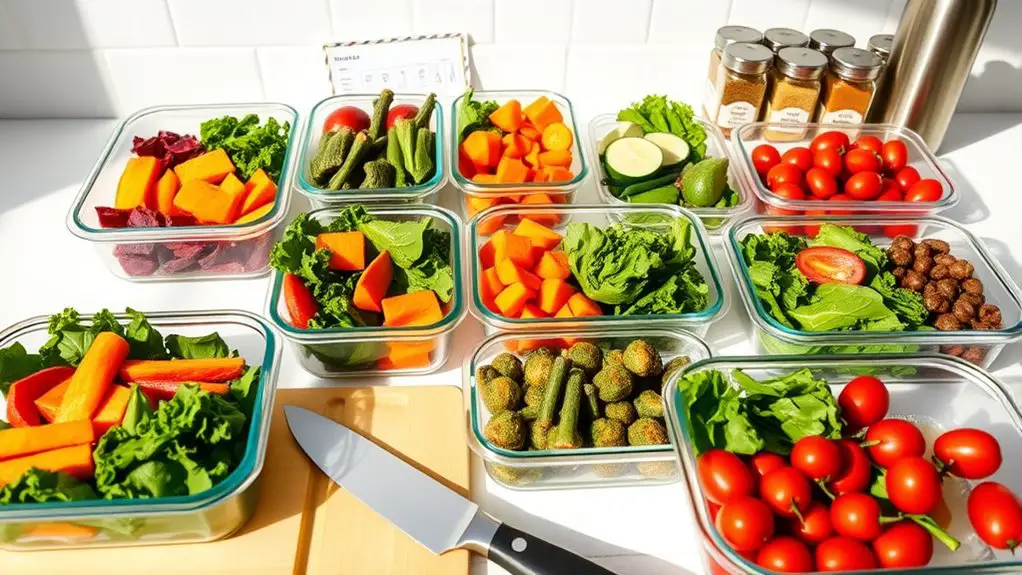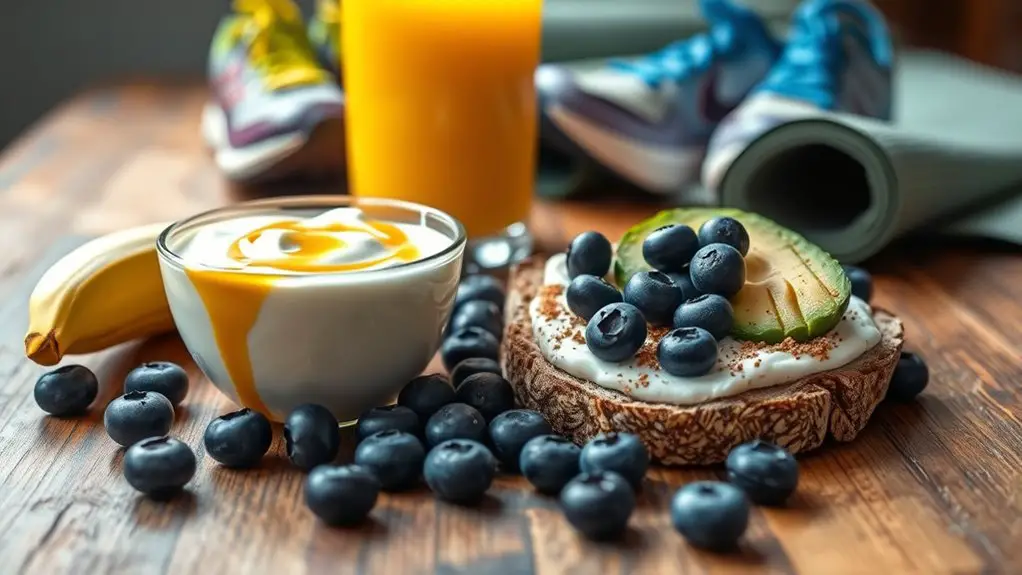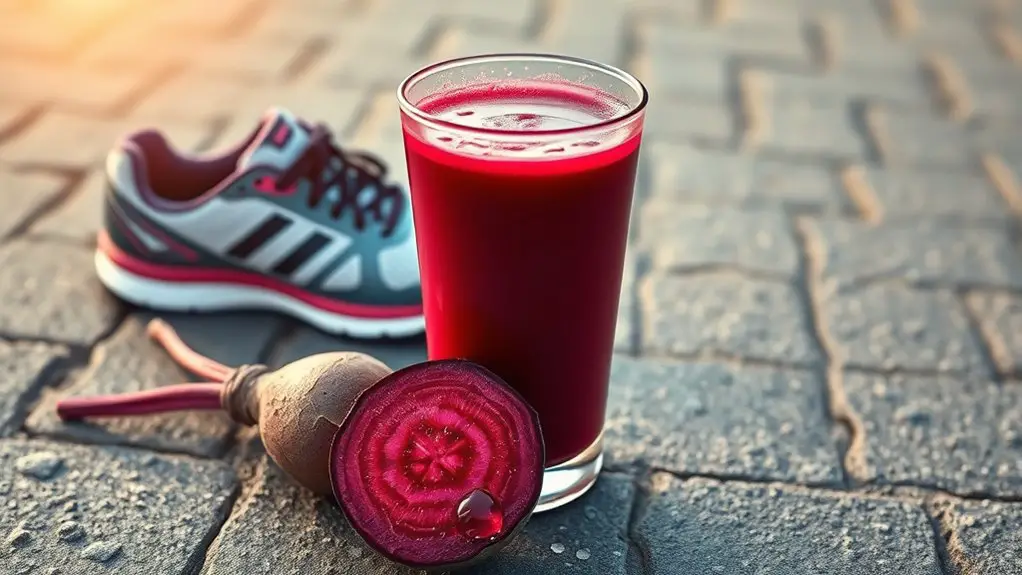To meal prep for an athletic lifestyle, start by understanding your unique nutritional needs and track how different foods affect your energy levels. Invest in quality storage containers, a food scale, and good kitchen tools. Create a weekly meal plan that balances proteins, carbs, and healthy fats while including plenty of fruits and veggies. Use batch cooking techniques to save time, and store meals safely to maintain freshness. Discover more about optimizing your meal prep strategies for peak performance.
Understanding Your Nutritional Needs
How can you determine what your body really needs to perform at its best? Start by listening to it. Pay attention to how you feel after meals and during workouts. Everyone's needs differ—some thrive on carbs for energy, while others may require more protein for muscle repair. Keep track of your energy levels and how your body responds to different foods. You might find that whole foods, rich in nutrients, fuel your freedom to move and perform. Don't shy away from experimenting; try new foods and see how they impact your performance. Hydration is key, too. Remember, a well-nourished body is a powerful ally in your quest for an active, liberated lifestyle. Embrace the journey of discovering what works for you!
Essential Meal Prep Tools and Equipment
To fuel your athletic lifestyle effectively, having the right tools in your kitchen can make all the difference. Start with quality storage containers—glass or BPA-free plastic—to keep your meals fresh and organized. A reliable food scale will help you measure portions accurately, ensuring you get the nutrients you need. Invest in a good set of knives and cutting boards to speed up your prep time. A blender or food processor is essential for smoothies and sauces, while a slow cooker or Instant Pot can save you time on busy days. Finally, don't forget a meal planner or app to keep track of your creations. With these tools, you'll release your culinary freedom and elevate your meal prep game!
Creating a Weekly Meal Plan
A well-structured weekly meal plan is your roadmap to success in maintaining an athletic lifestyle. Start by identifying your nutritional needs based on your goals, whether it's building muscle, improving endurance, or simply feeling great. Next, choose a variety of proteins, carbs, and healthy fats to keep your meals exciting and balanced. Don't forget to include plenty of fruits and veggies for essential vitamins and minerals.
Set aside some time each week to plan out your meals, making sure to account for any events or workouts. This way, you won't feel restricted, but empowered to enjoy your food while fueling your body. Flexibility is key, so allow room for adjustments as your week unfolds. Enjoy the freedom meal planning brings!
Batch Cooking Techniques for Efficiency
While juggling a busy schedule, batch cooking can become your best friend in maintaining an athletic lifestyle. Start by choosing a day when you can dedicate a few hours to cooking. Prep large portions of grains, proteins, and veggies that can be mixed and matched throughout the week. Invest in quality containers to easily separate meals, making it simple to grab and go. Utilize your oven, stovetop, and slow cooker to cook multiple items simultaneously, saving you time and energy. Don't forget to season your meals boldly; flavor's essential for keeping things exciting. This way, you'll have nutritious meals ready to fuel your workouts and adventures, allowing you the freedom to focus on your athletic goals without the stress of daily cooking.
Storing and Reheating Meals Safely
Even though you've put in the effort to prepare healthy meals, knowing how to store and reheat them safely is just as essential. Proper storage maximizes freshness and prevents foodborne illnesses. Use airtight containers, and label them with dates to keep track of how long they've been stored. When reheating, verify your meals reach an internal temperature of 165°F for safety.
| Storage Method | Duration | Best Practices |
|---|---|---|
| Fridge | 3-4 days | Airtight containers |
| Freezer | 3-6 months | Seal tightly, label |
| Room Temp | 2 hours | Keep covered, avoid heat |
With these tips, you'll enjoy your meals while staying healthy and active!
Frequently Asked Questions
How Do I Adjust Meal Prep for Different Training Phases?
To adjust meal prep for different training phases, you'll want to modify your calorie intake and macronutrient ratios. Focus on protein for strength phases, carbs for endurance, and healthy fats for recovery, keeping it flexible and enjoyable.
What Are the Best Protein Sources for Muscle Recovery?
Think of protein as the strong tree in your garden, nurturing growth. For muscle recovery, you'll want chicken, fish, eggs, beans, and nuts. They'll help you flourish after tough workouts, ensuring you feel free and strong.
How Can I Avoid Meal Prep Burnout?
To avoid meal prep burnout, switch it up! Try different recipes, involve friends, or dedicate one day for planning. Keep it simple, and don't stress—flexibility will keep your motivation alive and meal prep fun!
Are There Specific Supplements I Should Consider While Meal Prepping?
When considering supplements, you might want to focus on protein powders, omega-3s, and multivitamins. They can enhance your nutrition and support your energy levels while keeping your meal prep simple and effective. You've got this!
How Do I Manage Grocery Shopping Costs for Meal Prep?
Managing grocery shopping costs starts with planning. Make a list, stick to it, and buy in bulk. Look for sales, use coupons, and choose seasonal produce. You'll save money while enjoying delicious meals.




